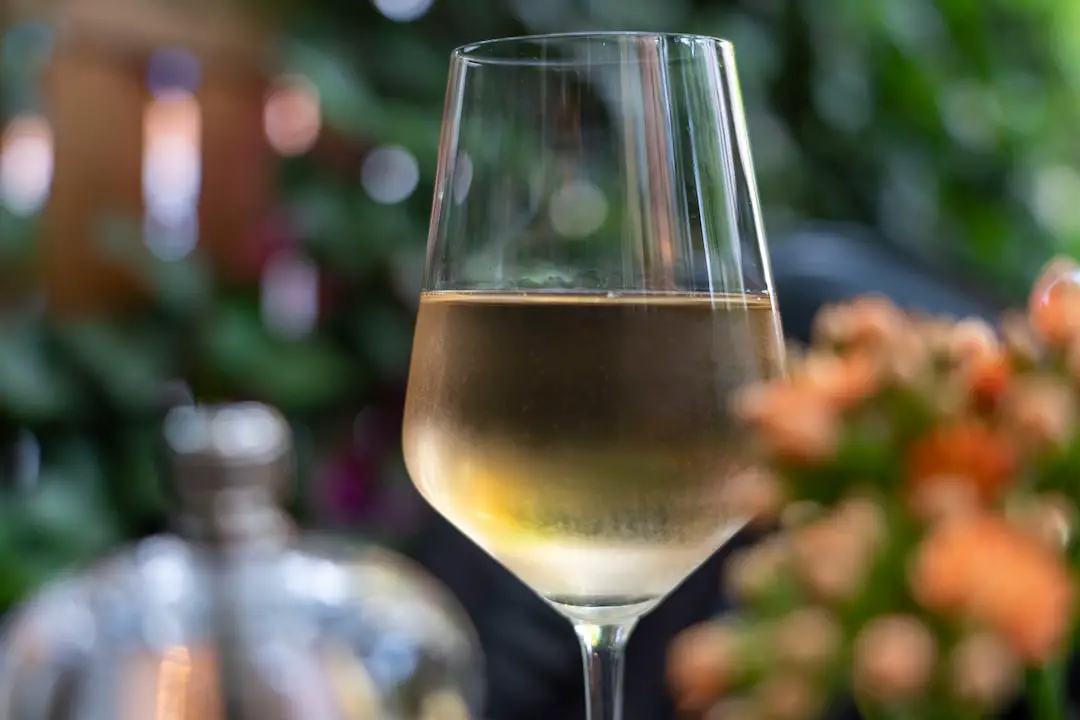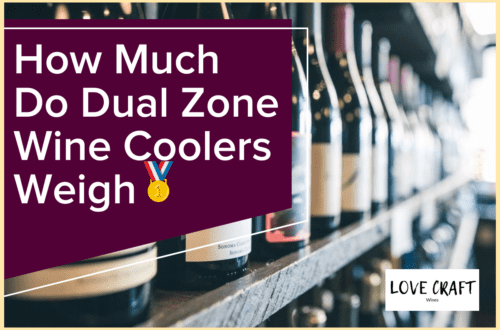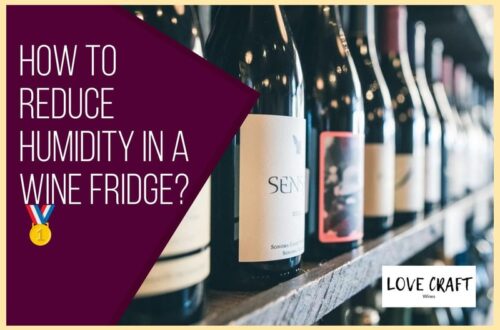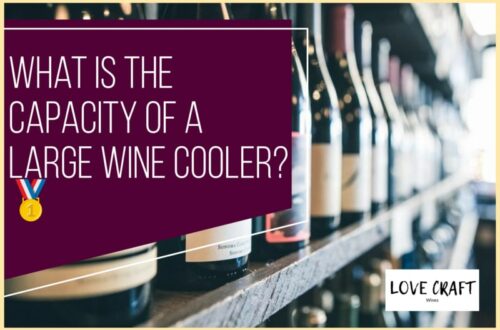Imagine standing in a sun-kissed vineyard, surrounded by rows of lush grapevines. The air is scented with the intoxicating aroma of fermenting grapes.
You take a sip of a rich, velvety wine and let the flavors dance on your tongue. Wine tasting can be a sensory experience like no other. It allows you to explore the nuances of different wines, learn about the winemaking process, and discover what you like and why.
If you’re new to wine tasting, it can be overwhelming to know where to start. With so many different types of wines, regions, and styles, it can be hard to know what to look for. But fear not, with a few tips and tricks, you’ll be able to confidently navigate a wine tasting and impress your friends with your newfound knowledge.
In this beginner’s guide, we’ll explore the basics of wine tasting, from evaluating the appearance and aroma to assessing the taste and finish, as well as tips for pairing wine with food.
So, grab a glass and let’s get started.
Table of Contents
Understanding the Basics of Wine Tasting
Before diving into the intricate details of vintages and grape varieties, it’s important to understand the basics of how to taste and evaluate a glass of wine. Wine tasting etiquette is an essential part of the experience.
Firstly, always hold the glass by the stem to avoid warming up the wine with your hand.
Secondly, swirl the wine in the glass to release its aromas.
Smell the wine before taking a sip to get a sense of its flavors.
Finally, take a small sip and let it sit on your tongue for a few seconds before swallowing.
It’s also helpful to become familiar with popular wine varietals, such as Cabernet Sauvignon, Chardonnay, and Pinot Noir.
Each varietal has its unique characteristics that can make them stand out.
For example, Cabernet Sauvignon is known for its full-bodied taste with notes of black currant, while Chardonnay is typically light and crisp with flavors of citrus and apple.
Understanding the basics of wine tasting and popular varietals can make the tasting experience more enjoyable and help you appreciate the nuances of different wines.
As you prepare for your tasting experience, there are a few more things to keep in mind to get the most out of your experience.
Preparing for Your Tasting Experience
Get ready to jump into the exciting world of experiencing different flavors and aromas as you prepare yourself for this tasting journey. Before you head to the tasting room, it’s important to familiarize yourself with some basic preparation tips.
Here are some things to keep in mind:
-
Dress appropriately: Wine tasting is a sophisticated activity, so it’s important to dress appropriately. Avoid wearing strong perfumes or colognes, and opt for comfortable yet elegant clothing.
-
Tasting room etiquette: Be respectful of other tasters and the tasting room staff. Avoid talking loudly, chewing gum, or eating strong-smelling foods. Remember to use the spittoon provided if you don’t want to drink all the samples.
-
Choosing the right glass: The shape and size of the glass can have a significant impact on the aroma and taste of the wine. Choose a glass that is clear and tulip-shaped, with a stem to hold the glass without warming the wine.
-
Hydrate and snack: Drinking water and snacking on plain crackers between tastings can help cleanse your palate and prevent you from getting too intoxicated.
Now that you’re prepared for your wine tasting adventure, it’s time to move on to evaluating the appearance and aroma of wine.
Evaluating the Appearance and Aroma of Wine
Experience the full depth and complexity of wine by learning how to evaluate its appearance and aroma like a true connoisseur.
First, take a look at the wine’s color intensity. Hold the glass up to the light and observe the hue. Is it deep and rich, or light and pale? Note that the color can indicate the age of the wine, with older wines typically having a more amber or brick-like hue.
Next, take a whiff of the wine and evaluate its bouquet complexity. Swirl the glass to release the aromas and take a deep sniff. Can you detect any fruity or floral notes? Are there any hints of oak or spice? These scents can provide insight into the wine’s origin, grape variety, and age.
Once you’ve taken in the appearance and aroma of the wine, it’s time to move on to assessing the taste and finish. Take a small sip and let it settle on your tongue. Pay attention to the flavors. Is it sweet or dry? Can you detect any fruit or spice notes?
Then, swallow or spit out the wine and evaluate the finish. Does the flavor linger in your mouth, or does it disappear quickly? Does the wine leave a smooth or harsh aftertaste? These factors will help you determine the overall quality of the wine and whether it’s a good fit for your palate.
Assessing the Taste and Finish of Wine
You’re about to have your taste buds blown away with the incredible flavors and finishes of each sip you take. Get ready to experience a symphony of flavors that will leave you wanting more!
When it comes to assessing the taste and finish of wine, there are a few key factors to keep in mind. Here are some tips to help you navigate this part of the tasting process:
-
Tasting notes: Take note of the different tastes you experience as you sip the wine. Is it fruity, spicy, or floral? Does it have hints of oak or vanilla? Keep in mind that different varietals will have different flavor profiles, so it’s important to approach each wine with an open mind.
-
Palate development: As you continue to taste more wines, you’ll start to develop your palate and be able to pick up on more subtle flavors. Pay attention to the wine’s acidity, tannins, and body. Is it light and refreshing or bold and full-bodied? Does it leave a dry or sweet finish in your mouth?
Now that you have a better understanding of how to assess the taste and finish of wine, it’s time to move on to the next step: pairing wine with food.
Tips for Pairing Wine with Food
If you want to elevate your dining experience, it’s essential to understand how to pair food and wine correctly. Wine varietals have different flavor profiles, and pairing them correctly with a meal can enhance the flavors of both the food and the wine.
When pairing wine with food, it’s crucial to consider the body, acidity, and flavor intensity of both the wine and the dish. For example, a light-bodied white wine like Pinot Grigio pairs well with seafood and salads, while a full-bodied red wine like Cabernet Sauvignon complements red meat and rich sauces.
The acidity in a white wine can cut through the richness of a creamy pasta dish, while a sweet dessert wine can balance the bitterness of dark chocolate. Remember that pairing wine with food is all about creating a balance of flavors, so don’t be afraid to experiment and try different combinations to find what works best for your palate.
Frequently Asked Questions
What are the different types of wine glasses and how do they affect the taste of wine?
There are several types of wine glasses, each with its unique shape and design that can affect the taste of wine.
Some of the most common wine glass shapes include the Bordeaux glass, Burgundy glass, and the Champagne flute.
The Bordeaux glass has a tall bowl with a wider opening, which allows for more oxygen to enter the wine, enhancing its aroma and taste.
The Burgundy glass, on the other hand, has a wider bowl with a narrower opening, which concentrates the aroma of the wine, making it perfect for red wines with delicate aromas.
Finally, the Champagne flute is a tall and narrow glass that preserves the bubbles in sparkling wines and Champagne.
Choosing the right wine glass for your wine can significantly improve your wine tasting experience, allowing you to savor the full flavor and aroma of your wine.
How should I store my wine to ensure it stays in good condition?
Proper storage is the key to keeping your wine in good condition. You’ve probably heard the adage ‘wine gets better with age,’ but this is only true if it’s stored correctly.
Temperature control is crucial, as wine should be stored in a cool, dark place with a consistent temperature between 45-65 degrees Fahrenheit. Any fluctuations in temperature can affect the taste and aroma of the wine, so it’s important to avoid storing it in areas that are too hot or too cold.
Additionally, the wine should be stored horizontally to keep the cork moist and prevent air from seeping in. By following these simple steps, you can ensure that your wine stays in optimal condition and is ready to be enjoyed whenever you choose to open it.
What are some common wine faults and how can I detect them during a tasting?
Off flavors identification is an essential skill for wine lovers, as it allows them to detect any faults that may have occurred during the winemaking process.
Some common wine faults include cork taint, oxidation, and volatile acidity. To prevent wine spoilage, it’s best to store wine properly and avoid exposure to heat or light.
During a wine tasting, look out for unusual aromas or flavors, such as a musty or moldy smell, a sour taste, or a brownish color, which may indicate a wine fault.
By being aware of these off flavors and taking steps to prevent wine spoilage, you can ensure that your wine always tastes its best.
How do I properly clean and care for my wine glasses?
To ensure that your wine glasses remain in top condition and provide the best tasting experience, it’s important to clean and care for them properly.
There are several cleaning methods to choose from, including hand washing with a soft sponge or cloth and using a dishwasher with a gentle cycle. It’s important to avoid using abrasive materials or harsh chemicals that can scratch or damage the glass.
In addition, preventive measures such as handling the glasses with care and storing them in a safe place can also help to prevent scratches.
With proper cleaning and care, your wine glasses can provide many years of enjoyment and enhance your wine tasting experience.
Can I still enjoy wine if I don’t have a sophisticated palate or sense of smell?
Don’t let a lack of a sophisticated palate or sense of smell deter you from enjoying wine! There are many myths surrounding wine tasting that can make the process seem daunting, but simplifying it can make it much more enjoyable.
When it comes to pairing wine with food, there are several tips and tricks to ensure the perfect match. Don’t be afraid to experiment with different combinations to find what works best for you.
Remember, wine tasting is all about the experience and enjoying what you’re drinking, so don’t worry too much about the technical aspects. Just sit back, relax, and savor every sip.
Conclusion
Congratulations, you’ve completed your first wine tasting! You’ve learned the basics of wine tasting, how to prepare for your tasting experience, and how to evaluate the appearance, aroma, taste, and finish of wine.
But don’t stop there! Keep practicing your wine tasting skills and trying out new wines. Coincidentally, the more you taste wine, the more you’ll develop your palate and be able to distinguish between different flavors and aromas.
You’ll also start to notice how different wines pair with different foods, allowing you to enhance your dining experiences even further. So keep exploring the world of wine, and don’t be afraid to try something new! Who knows, you may just discover your new favorite wine.
Cheers!





